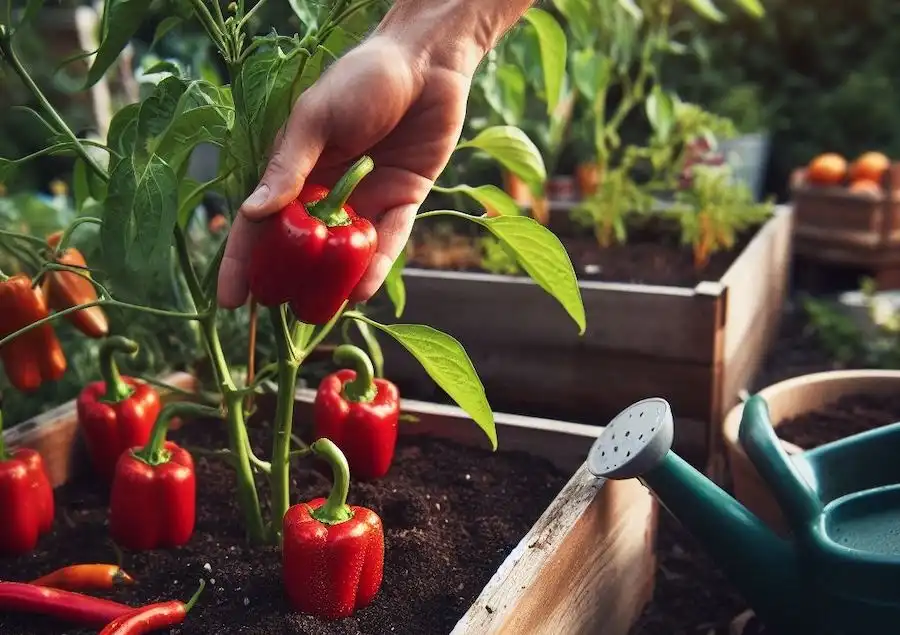Secret Tips for Growing Perfect Peppers at Home

Are you eager to cultivate a thriving pepper garden at home? Achieving bountiful harvests and robust, flavorful peppers requires more than just soil and sunlight. In this comprehensive guide, we unveil secret tips for homegrown pepper success, incorporating valuable insights to elevate your pepper care routine.
1. Harness the Power of Complex B Vitamins
Elevate your pepper care routine by incorporating complex B vitamins. These nutrients are essential for enhancing growth and promoting robust fruit development. Consider using a balanced B-complex fertilizer to provide the necessary nourishment for your pepper plants.
2. Optimal Spacing for Maximum Growth
Ensure proper spacing between pepper plants to allow for optimal air circulation and sunlight exposure. This not only reduces the risk of diseases but also promotes healthier foliage, ultimately leading to a more abundant harvest. Refer to specific spacing recommendations for the pepper varieties you are cultivating.
3. Strategic Crop Rotation
Implement a systematic crop rotation plan in your garden to prevent soil-borne diseases and nutrient depletion. Avoid planting peppers in the same location year after year and rotate with unrelated crops to maintain soil health and optimize pepper growth.
4. Companion Planting for Pest Control
Explore companion planting strategies to naturally control pests in your pepper garden. Marigolds, basil, and oregano, for example, can act as natural repellents against common pests, reducing the need for chemical interventions.
5. Mulching for Moisture Retention

Apply a layer of organic mulch around your pepper plants to help retain soil moisture. Mulching also aids in weed suppression, regulates soil temperature, and provides a gradual release of nutrients, contributing to overall plant health.
6. Balanced Watering Schedule
Establish a consistent watering schedule to keep the soil evenly moist. While peppers prefer slightly drier conditions between watering, ensure they receive enough water to prevent stress and promote steady growth. Use a drip irrigation system or a watering wand to target the base of the plants.
7. Regular Soil Testing
Periodically test the soil in your containers for nutrient levels and pH balance. Adjust the soil composition as needed to ensure your peppers have access to the essential nutrients required for optimal growth and fruit production.
8. Natural Pest Deterrents
Integrate natural pest deterrents such as garlic spray or pepper-based solutions to ward off unwanted insects. These eco-friendly alternatives minimize the impact on beneficial garden organisms while effectively protecting your pepper plants.
9. Temperature Monitoring
Be mindful of temperature fluctuations, especially in container gardening. Peppers thrive in warm conditions, so monitor temperatures to prevent stress-related issues. Consider using shade cloth during excessively hot periods to shield your plants.
10. Timely Harvesting Practices

Harvest peppers at their peak ripeness to encourage continuous fruit production. Regularly picking mature peppers stimulates the plant to produce more, ensuring a prolonged harvest season.
Incorporate these secret tips into your pepper-growing journey, and watch your home garden transform into a haven of vibrant, flavorful peppers. By adopting these practices, you’ll unlock the full potential of your pepper plants and enjoy a continuous harvest of delicious, homegrown peppers. Happy growing!



















